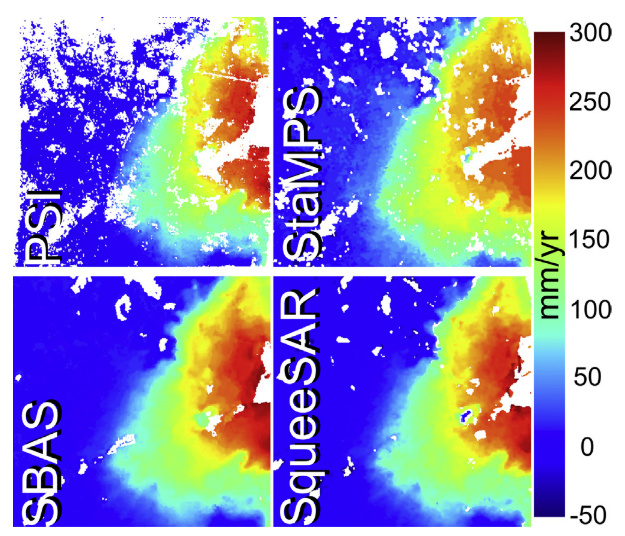I’m doing some research on different types of interferometry.
I encountered one called SqueeSAR, which is a combination of PSI and SBAS.
As far as i can read, it can only detect changes in terrain that is less than 2,8 cm / year, because it is the wavelength divided by 2.
Is there also such a maximum using differental interferometry? Lets say i wanted to detect some changes that are bigger, and i dont need to be that precise.
Best regards
Michael
Hello @michael1, that change is because the satellite sensor emits a wavelength of 5.6 cm like ERS, ENVISAT, Sentinel-1, but in other satellites (ALOS-PALSAR for example) you can have a other wavelength depending on what do you want to do, in ALOS is ~23.6cm (e.g you can go through vegetation cover). In earthquakes you can see to interseismic displacement (small changes), 1 cycle of deformation or 2.8cm in ENIVSAT (or other) or 11.8cm in ALOS, but if you set larger values in deformation, then e.g 65 cycles = 182cm (2.8 x 65) in Sentinel or 767cm (11.8 x 65) in ALOS. The accuracy in C-band (5.6 cm) to LOS displacement is maybe <1mm/yr or in single measurement < 3mm (repeat-pass InSAR), depending of your time-series method, atmospheric-ionospheric delays in your data, or some parameters to repeat-passInSAR. In this image (Osmanoglu et al.,2016), you can see changes in SqueeSAR method in max ~28cm/yr working with ENVISAT data (5.6cm wavelenght), and not necessarily less than 2.8cm/yr.
1 Like
